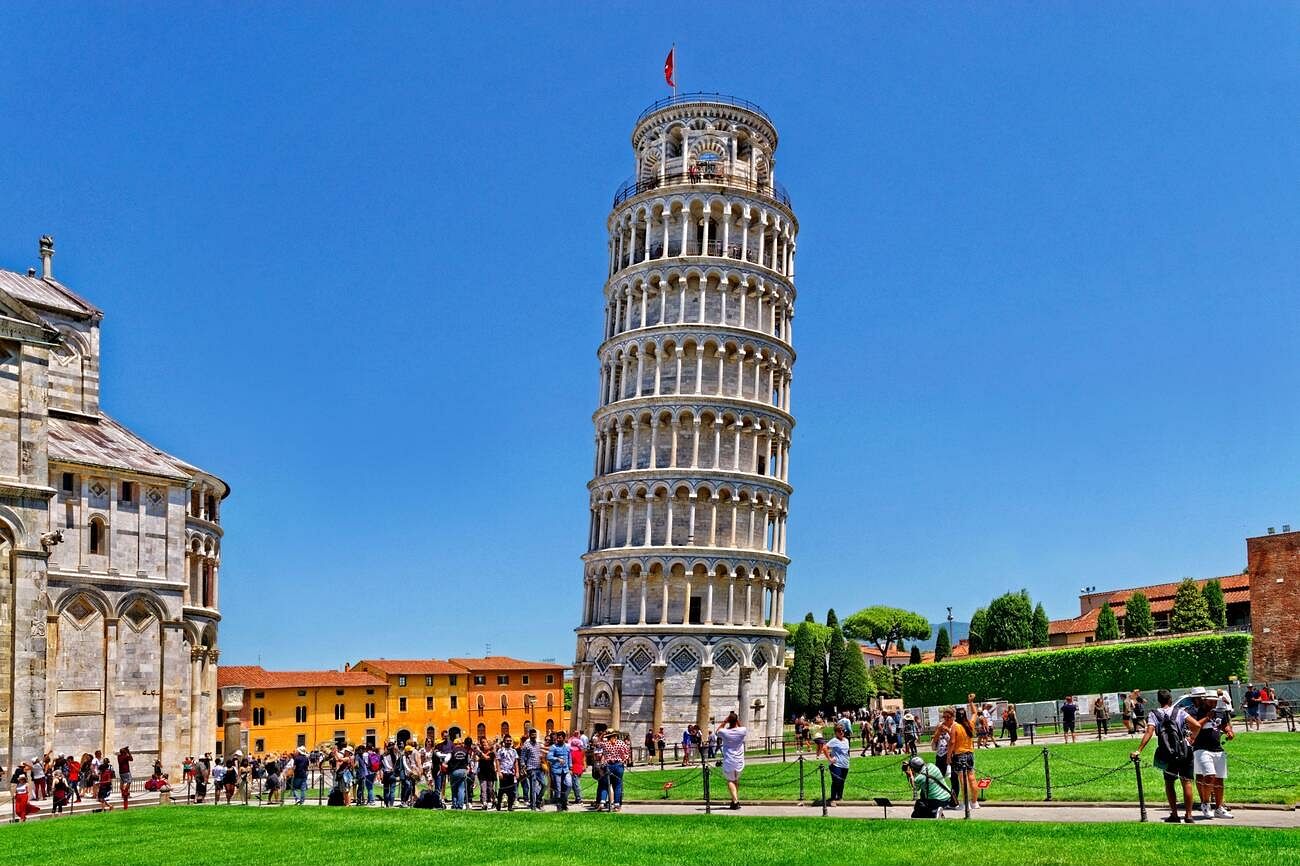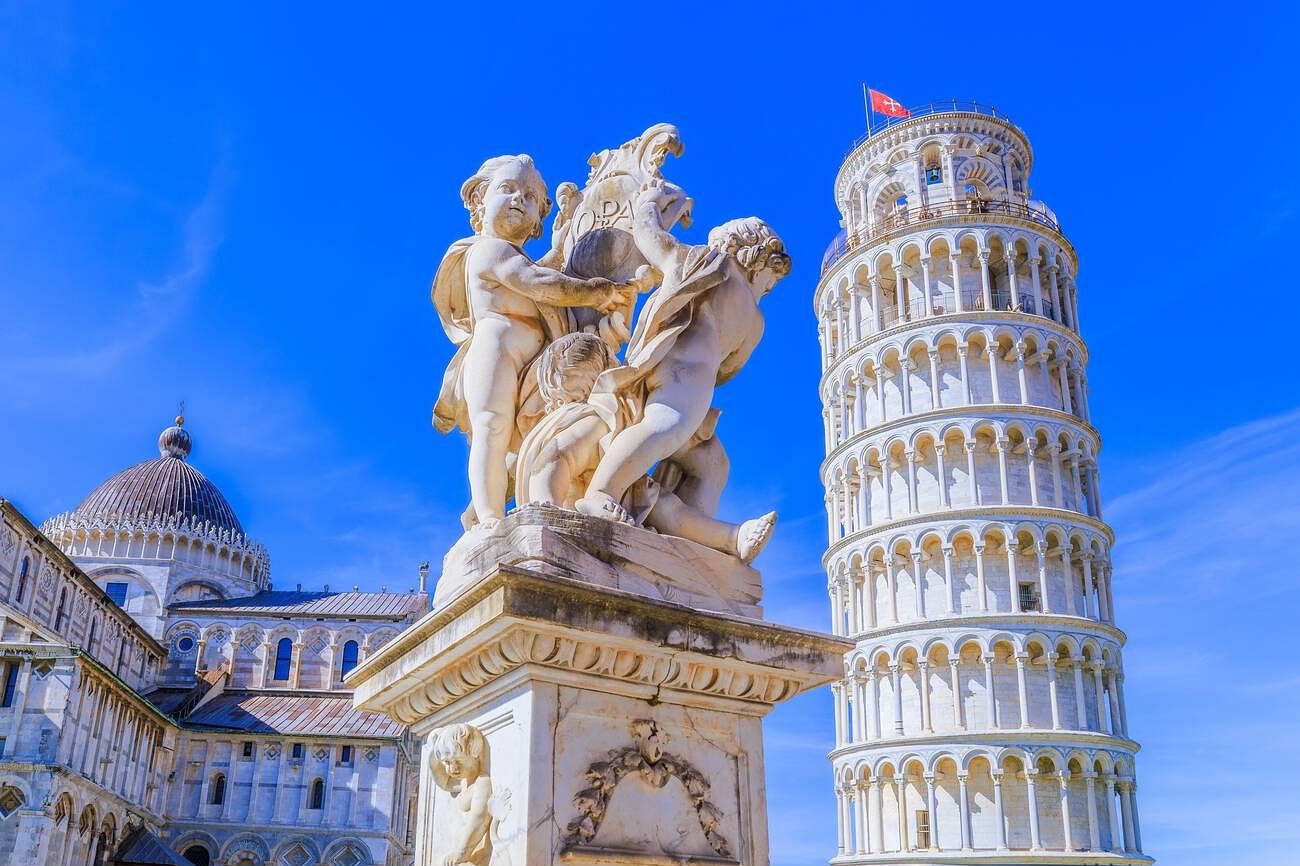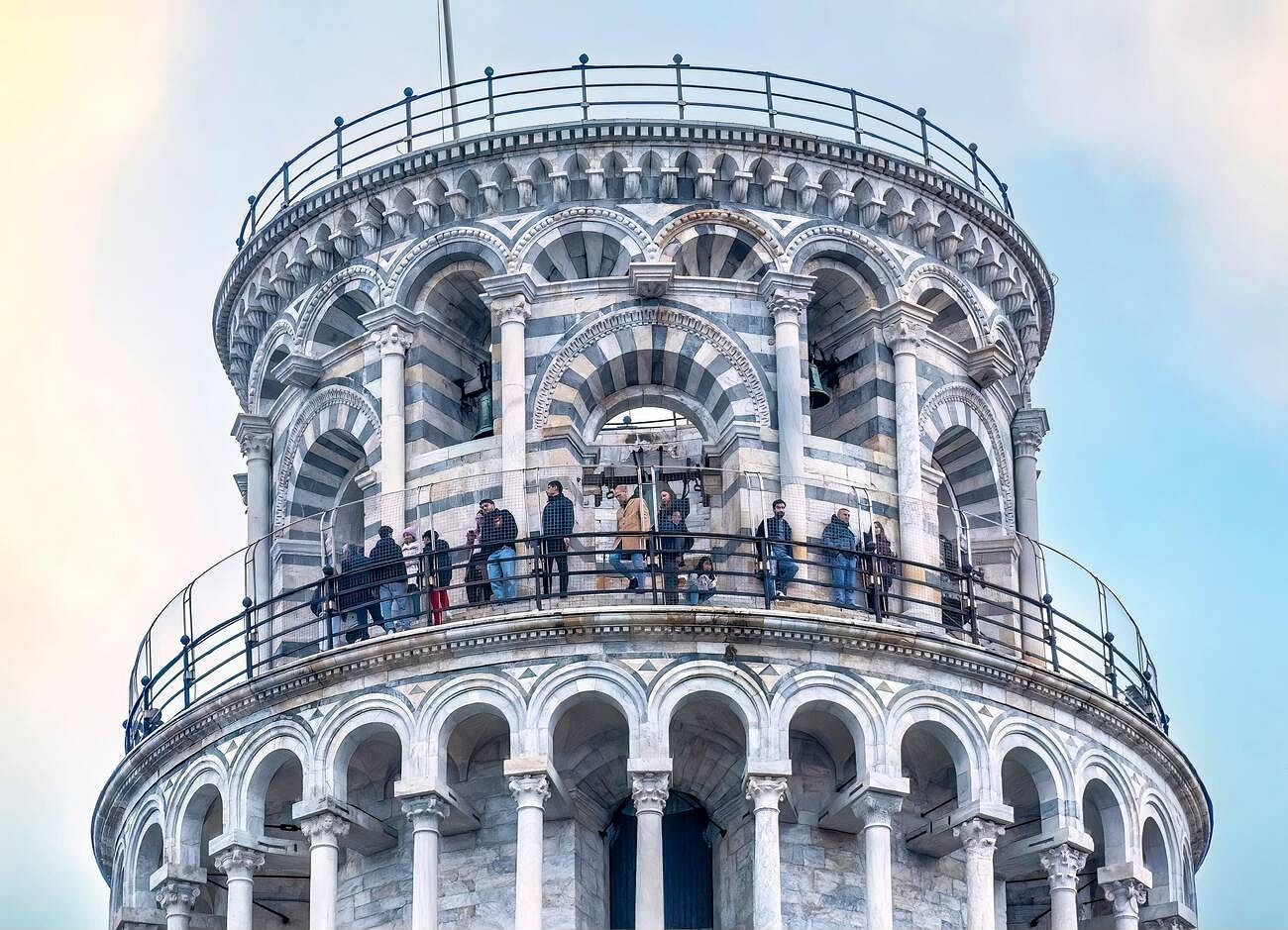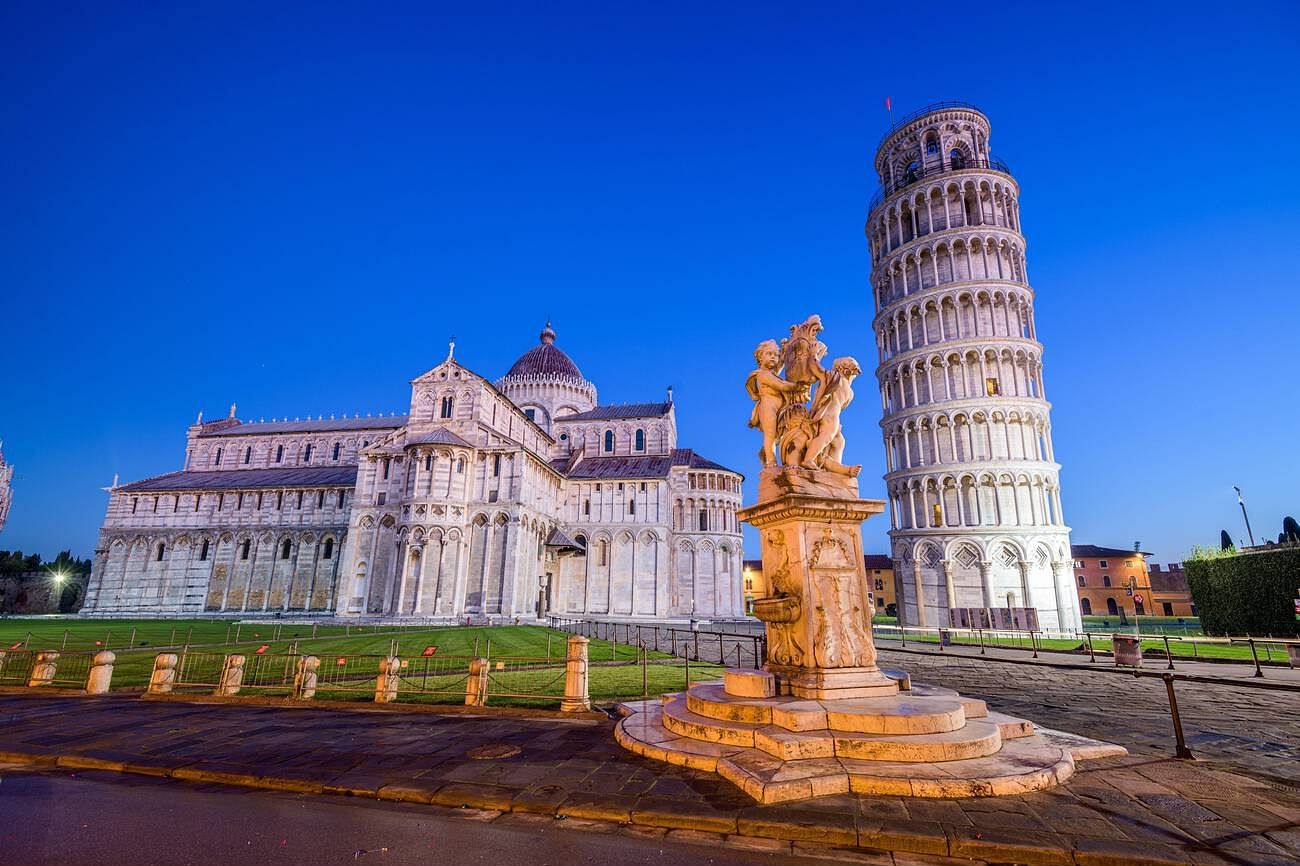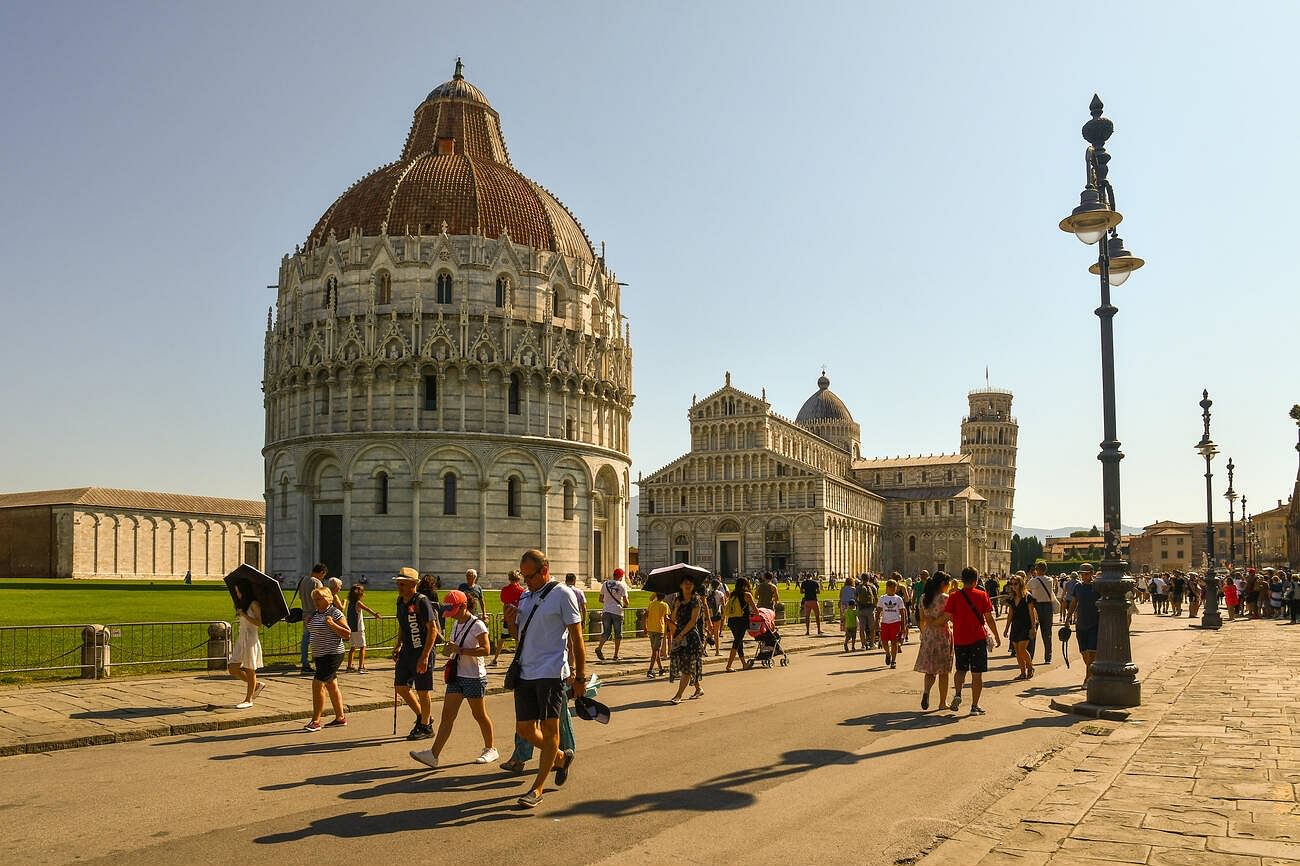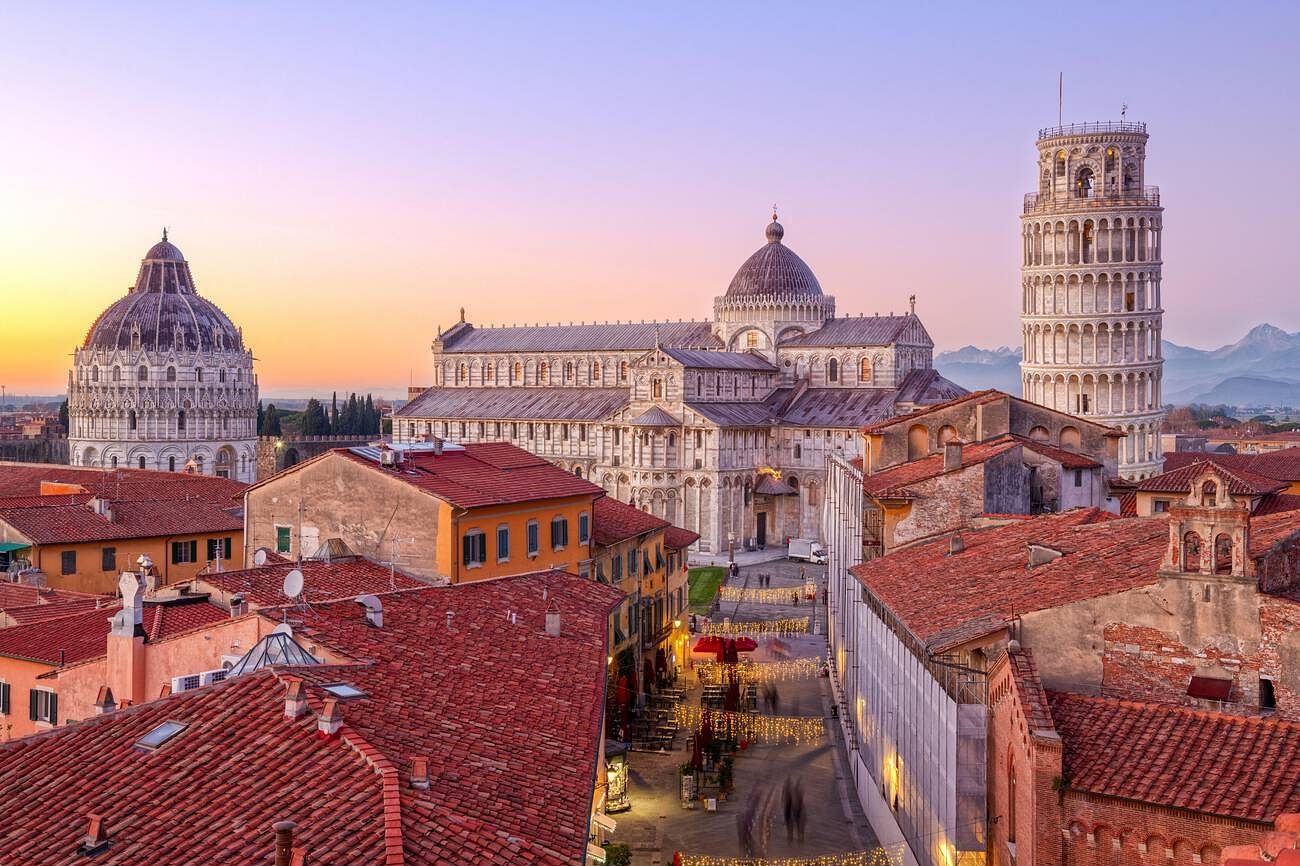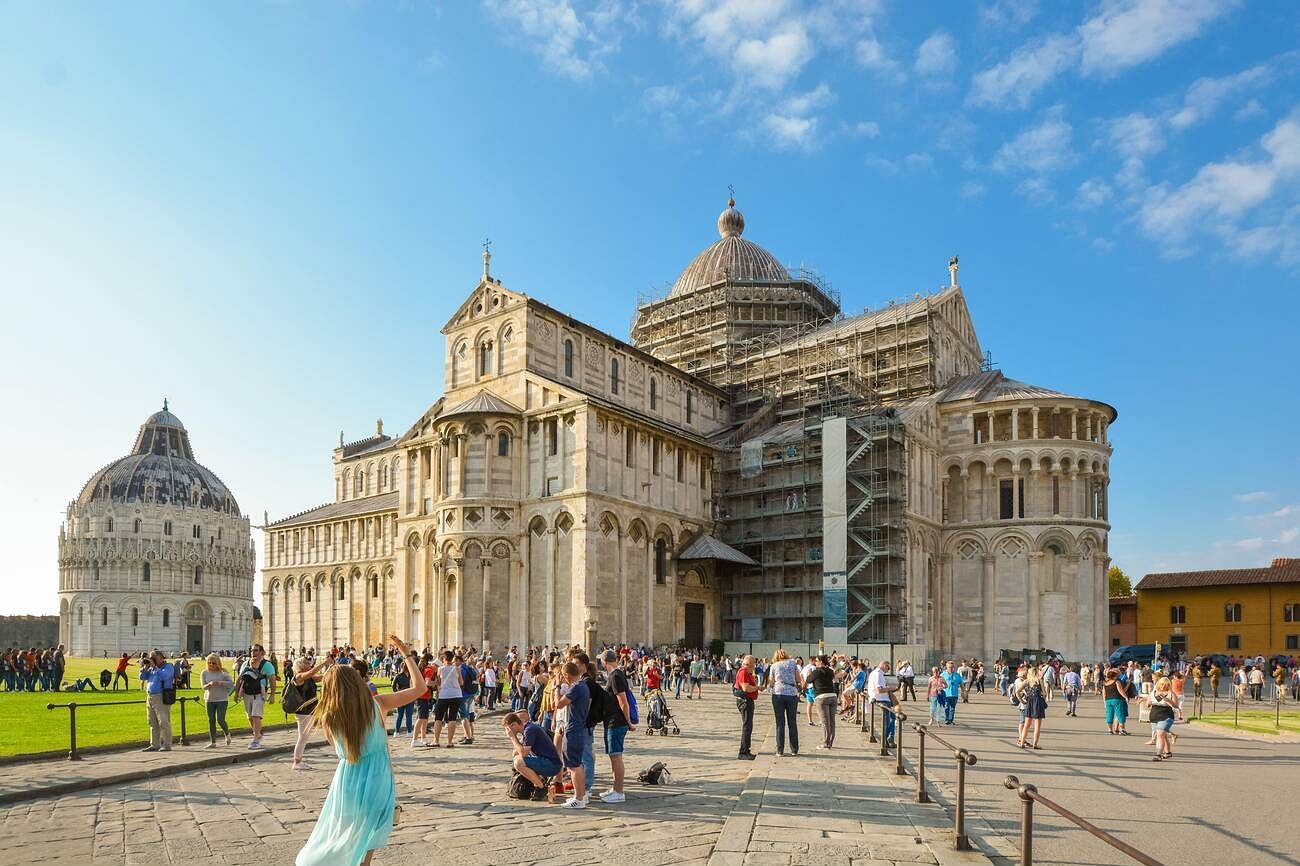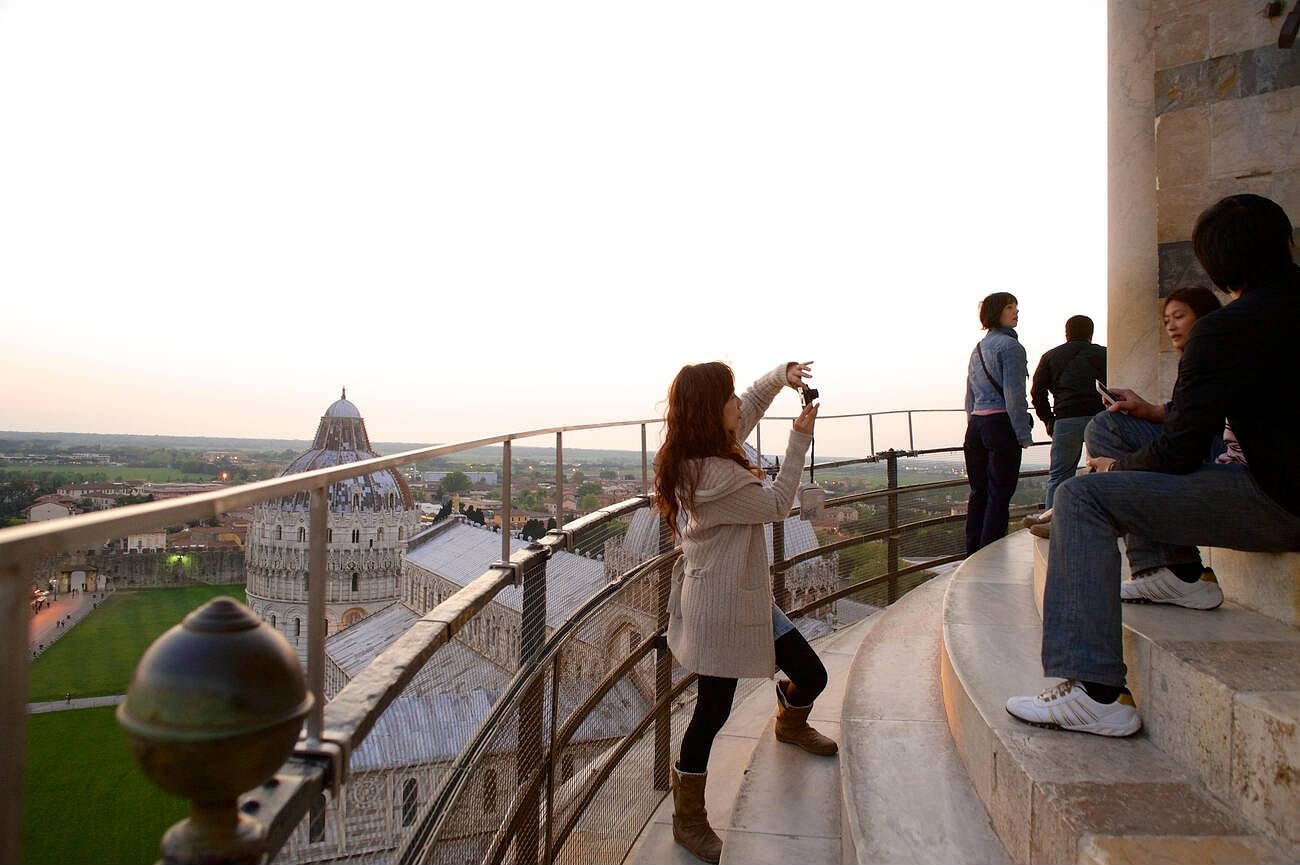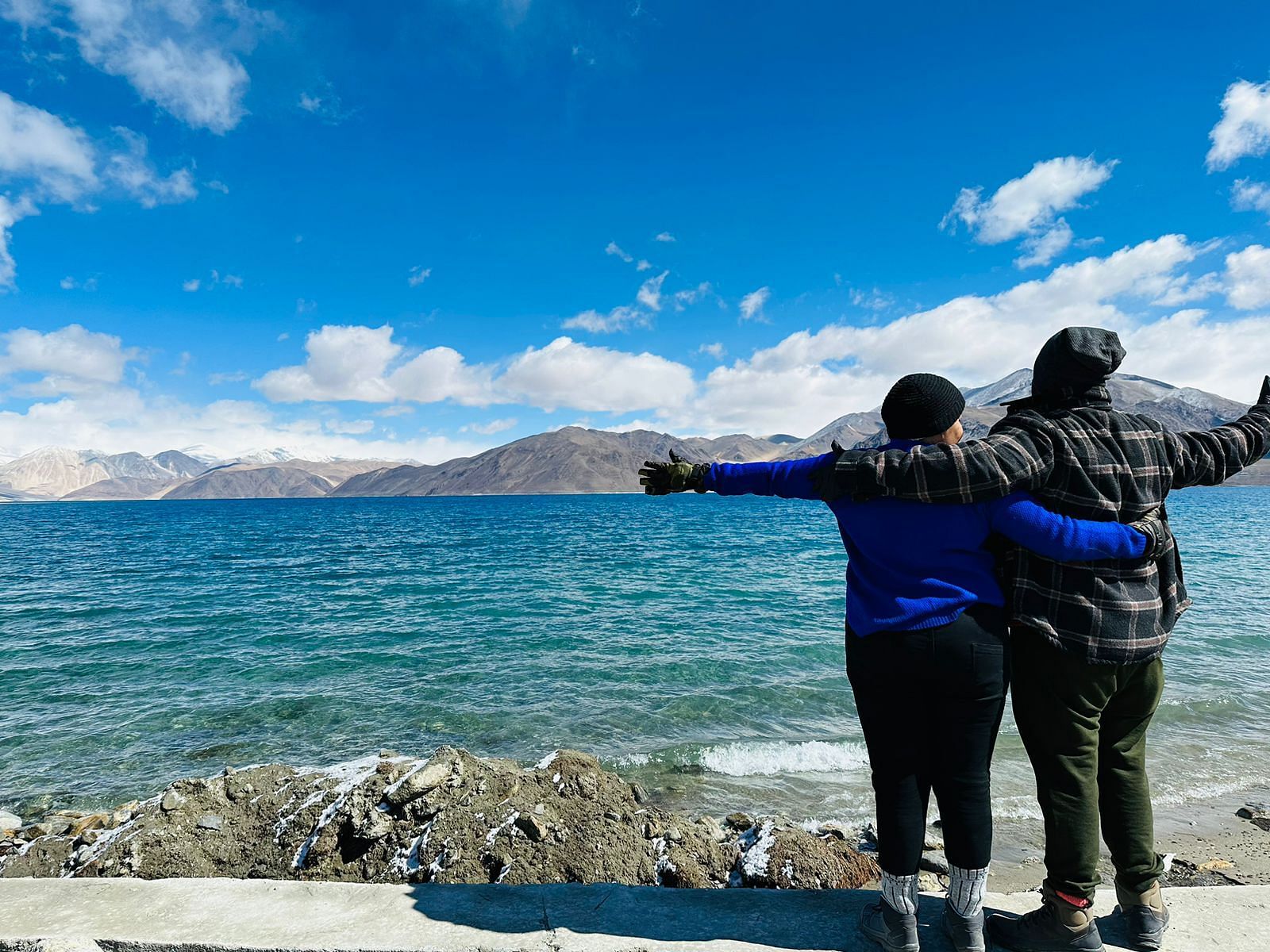What if I told you that one of the world’s most famous towers was actually a mistake? Yes, the Leaning Tower of Pisa was never meant to tilt—but today, that’s exactly why millions visit it!
I was all set for my Europe trip—with all the major attractions on my list! From the Eiffel Tower to the Colosseum, every famous landmark was mapped out. But there was one place that had always intrigued me: the Leaning Tower of Pisa. Until now, I had only known that the tower leans because of soft, uneven ground—it started tilting even before it was finished!
Over the years, architects tried everything to fix it, but the tower refused to obey. But what I discovered during my visit left me speechless—some locals whisper that the tower's tilt isn’t just an accident, but a curse... or maybe even the work of a ghost! Could it be true? Well, that’s a story you need to hear! Let’s uncover the untold secrets of the Leaning Tower of Pisa in Italy!
First Impressions: More Tilted Than Expected
You know that feeling when you finally see something in real life that you’ve only ever seen in pictures? That’s exactly what happened when I stood in front of the Leaning Tower of Pisa. I mean, I knew it was tilted—everyone does—but somehow, seeing it in person made me question everything. “Wait… is it supposed to be this tilted?”
I actually did a double take, half expecting someone to come running out with a giant rope to hold it up. But nope, there it was—leaning casually, as if it had no idea it was defying gravity. The architecture of the Leaning Tower of Pisa, with its elegant Romanesque design and intricate marble details, made the tilt look even more dramatic. I even overheard a tourist whisper, 'That thing looks like it’s about to fall any second.' And honestly? I agreed.
But the best part? Watching people pose for that classic “holding up the tower” photo. Some were pushing, some were kicking it, and one guy even pretended to eat it. It was hilarious!
That first moment staring at Pisa’s most famous mistake? Absolutely unforgettable. And definitely more tilted than expected.
Suggested Read: 15 Romantic Things To Do In Italy On Honeymoon
Legends and Myths: A Curse or a Miracle?
Have you ever looked at something that was supposed to be a disaster but turned out to be a masterpiece? That’s the Leaning Tower of Pisa for you—an architectural blunder that became one of the most famous landmarks in the world. But here’s the fun part: some believe the tower’s famous tilt is not just a result of poor planning but the work of a divine miracle—or perhaps even a curse. Let’s dive into the myths and legends that make this tower more than just a leaning wonder!
The Miracle of the Leaning Tower of Pisa
A Marvel That Defied Gravity
Imagine building a tower, only to realize it starts tilting before you even finish. Disaster, right? Well, not for Pisa. Despite its unstable foundation, the tower has stood tall (or, well, tilted) for over 800 years! Many see this as nothing short of a miracle, proving that even imperfections can lead to greatness.
A Divine Touch?
The tower is part of the Piazza dei Miracoli—literally the "Square of Miracles." Some believe that its lean was no accident but a divine intervention, making it one-of-a-kind. Had it stood straight, would it have become such an icon? Probably not!
A Blessing in Disguise
If the tower had been perfectly constructed, Pisa might have just been another charming Italian city. Instead, thanks to its famous flaw, it draws millions of visitors every year, boosting tourism and turning an engineering mistake into an economic miracle.
The Curse of the Leaning Tower of Pisa
A Historical Embarrassment
When the tower started leaning in the 12th century, it wasn’t a cause for celebration. The architects were horrified, the city was embarrassed, and for centuries, engineers struggled to fix it. Some even believed Pisa was cursed with bad luck, forever stuck with a "broken" monument.
Superstitions and Dark Legends
Local legends whisper that the tower’s tilt was a punishment from the gods—perhaps a sign of divine displeasure over Pisa’s past. Others claim that during its construction, workers fell to their deaths, adding an eerie, cursed energy to the site.
A Never-Ending Struggle
Keeping the tower from toppling over hasn’t been easy—or cheap! Generations of engineers have tried to stabilize it, with some efforts failing miserably. What if it was never meant to be saved? Some say Pisa is doomed to battle the curse of the leaning tower forever.
Curse or Miracle—You Decide!
So, is the Leaning Tower of Pisa a stroke of luck or a haunted mistake? Maybe it’s both. What started as a "curse" turned into a "miracle," proving that even the biggest flaws can become legendary. Whether you see it as divine intervention or a historical accident, one thing is certain: the world wouldn’t be the same without this perfectly imperfect tower.
Suggested Read: 15 Romantic Places To Visit In Italy On Honeymoon
Climbing the Leaning Tower: A Unique Experience
The First Steps: A Strange Feeling
The moment I stepped inside the Leaning Tower of Pisa, I felt something… off. The floor wasn’t quite level, and every step had this weird, slanted sensation—almost like I was walking on a ship swaying in the sea. It was a mix of excitement and mild dizziness, but hey, that’s what makes this climb so unique!
The Climb: A Spiral Like No Other
With 294 narrow, worn-out marble steps spiraling to the top, the climb was both thrilling and a little challenging. The tilt made it feel like I was leaning one way, then another—it’s nothing like climbing a normal tower. At times, I had to grab onto the wall just to steady myself!
The View: Absolutely Worth It!
Reaching the top was pure magic. The panoramic view of Pisa, with its terracotta rooftops and rolling hills, was breathtaking. Standing on a leaning structure while looking down at the Piazza dei Miracoli felt surreal—like I was a part of the history of the Leaning Tower of Pisa itself.
The Tower That Turned Imperfection into Perfection
The Leaning Tower of Pisa is a perfect example of how a flaw can turn into a masterpiece. Originally designed to stand tall and straight, the tower began to tilt due to unstable soil, making it seem like a construction failure. But instead of being forgotten or demolished, its unique lean became its most iconic feature.
Engineers worked over the centuries to stabilize it while preserving the tilt, turning an architectural mistake into a global wonder. Today, millions visit not just to admire its beauty but to celebrate the fact that even imperfections can make something truly extraordinary.
Things to Do at the Leaning Tower of Pisa
- Climb to the Top – Conquer 294 steps for stunning city views.
- Take the Iconic Photo – Get creative with fun perspective shots.
- Explore Piazza dei Miracoli – Wander through this UNESCO-listed square.
- Visit Pisa Cathedral – Admire Romanesque architecture of the Leaning Tower of Pisa (free entry, timed ticket needed).
- Check Out the Baptistery – Experience its famous echoing acoustics.
- Walk Through Camposanto – Discover frescoes and ancient tombs.
- Visit Museo dell'Opera del Duomo – See original sculptures and artifacts.
- Relax at Piazza dei Cavalieri – Explore Pisa’s historic political hub.
- Stroll Along the Arno River – Enjoy a peaceful riverside walk.
- Try Tuscan Delicacies – Savor cecina, Tuscan pasta, or local gelato.
Suggested Read: New 7 Wonders Of The World: A Journey Through Time
How to Visit Leaning Tower of Pisa
Location: Piazza del Duomo, 56126 Pisa PI, Italy
Reaching the iconic Leaning Tower of Pisa is a straightforward journey, thanks to the city's well-connected transportation network. Here's a comprehensive guide on how to visit Leaning Tower of Pisa:
1. By Air
Pisa International Airport (Galileo Galilei Airport) is the nearest airport, situated approximately 2 km (1.2 miles) from the city center. From the airport, you have several options:
- Taxi: A quick 10-minute ride will take you directly to the tower.
- PisaMover Shuttle: This service connects the airport to Pisa Centrale train station. From there, you can either walk (about 20-25 minutes) or take a bus to the tower.
- Walking: If you're traveling light, it's a pleasant 30-minute walk to the city center.
2. By Train
Pisa Centrale is the main train station, offering connections to major Italian cities such as Florence, Rome, Milan, and Venice. Upon arrival:
- Walking: The tower is approximately 1.5 km (0.9 miles) away, a 20-25 minute walk through the charming streets of Pisa.
- Bus: Local bus lines, including LAM Rossa or Navetta E, will take you to Piazza dei Miracoli, where the tower is located.
- Taxi: A short 5-10 minute ride can conveniently drop you at the site.
Alternatively, the smaller Pisa San Rossore station is closer to the tower, just a 5-minute walk away. However, not all trains stop here, so it's essential to check schedules in advance.
3. By Car
- For those driving, Pisa is accessible via the A12 motorway (from Genoa or Livorno) or the FI-PI-LI highway (from Florence). Parking options include:
- Piazza dei Miracoli Parking: A paid lot near the tower.
- Pietrasantina Parking: Another nearby option, both requiring a 5-10 minute walk to reach the tower.
4. By Bus
Regional buses connect Pisa to neighboring cities like Florence, Lucca, and Livorno. Buses typically arrive at Piazza Vittorio Emanuele II, which is about a 15-minute walk from the tower.
5. From Florence
- Train: Frequent trains from Florence's Santa Maria Novella station reach Pisa Centrale in about an hour.
- Bus: Companies like FlixBus offer direct routes, taking approximately 1.5 hours.
6. From Rome
- Train: High-speed trains (Frecciarossa or Italo) journey from Rome's Termini station to Pisa Centrale in roughly 2.5 to 3 hours.
- Flight: Direct flights from Rome to Pisa are available, with a flight time of about an hour.
Suggested Read: France Vs Italy: Which Is Better For A Destination Wedding?
Best Time to Visit Tower of Pisa
To make the most of your visit, choosing the best time to visit Tower of Pisa is key! Consider both the season and time of day for an unforgettable experience.
Optimal Seasons:
- Spring (April – June): Enjoy mild weather, blooming flowers, and a lively yet comfortable atmosphere—perfect for sightseeing!
- Fall (September – October): Cooler temperatures and fewer crowds make this a great time to explore Pisa at a relaxed pace.
These months are part of the shoulder seasons, offering pleasant weather and fewer tourists compared to the busy summer rush.
Best Times of Day:
- Early Morning: Arriving right after opening hours lets you beat the crowds and enjoy soft, golden light—ideal for stunning photos.
- Late Afternoon (After 6:00 PM): By this time, most tour groups have left, giving you a quieter and more peaceful experience.
Leaning Tower of Pisa Tickets Price and Entry Details
Leaning Tower Only:
- Adults: ₹1,800
- Children (8-18 years): ₹900
- Children under 8: Free (but not allowed to climb the tower for safety reasons).
Combined Tickets (Includes entry to multiple monuments in Piazza dei Miracoli):
- Cathedral + Tower: ₹2,430
- Cathedral + Baptistery + Camposanto + Museo delle Sinopie: ₹900
- Cathedral + Baptistery + Camposanto + Museo dell'Opera del Duomo: ₹900
Note: Entry to the Pisa Cathedral (Duomo) is free, but you still need a (free) timed ticket to enter.
Opening Hours:
- April to September: 9:00 AM - 8:00 PM
- October to March: 9:00 AM - 6:00 PM
- December 25: Closed
- January 1: 12:00 PM - 5:00 PM
Time Slots & Group Size:
- Entry to the tower is timed, with slots available every 15-20 minutes.
- Each visit lasts about 30 minutes, including the climb and time at the top.
- A maximum of 45 visitors are allowed inside the tower at a time.
Suggested Read: Catacombs of Paris: Unlock the Dark Side of the City of Love
Must-Know Tips Before You Go
1. Climbing the Tower
- Steps: Be prepared to climb 294 steps to reach the top—there is no elevator.
- Difficulty: The spiral staircase is narrow and steep, making it challenging for those with mobility issues or claustrophobia.
- Age Restrictions: Children under 8 years old are not permitted to climb for safety reasons.
2. Book Your Tickets in Advance
- The tower is one of Italy’s most popular attractions, and tickets often sell out quickly. Only 40 people are allowed per time slot, so book in advance.
- Booking online at www.opapisa.it is highly recommended, especially during peak seasons.
3. Arrive Early
- Arrive at least 15-20 minutes before your time slot to go through security checks.
- Late arrivals may not be allowed to enter.
4. Travel Light
- Large bags, backpacks, and luggage are not allowed inside the tower.
- Free lockers are available near the entrance.
5. Photography Tips
- The classic “holding up the tower” pose is fun but can be tricky with crowds—be patient!
- The best spots for photos are from the Piazza dei Miracoli and the nearby city walls.
6. Respect the Rules
- Follow staff instructions and avoid leaning on the fragile structure.
- Keep your ticket handy, as it may be checked at multiple points.




